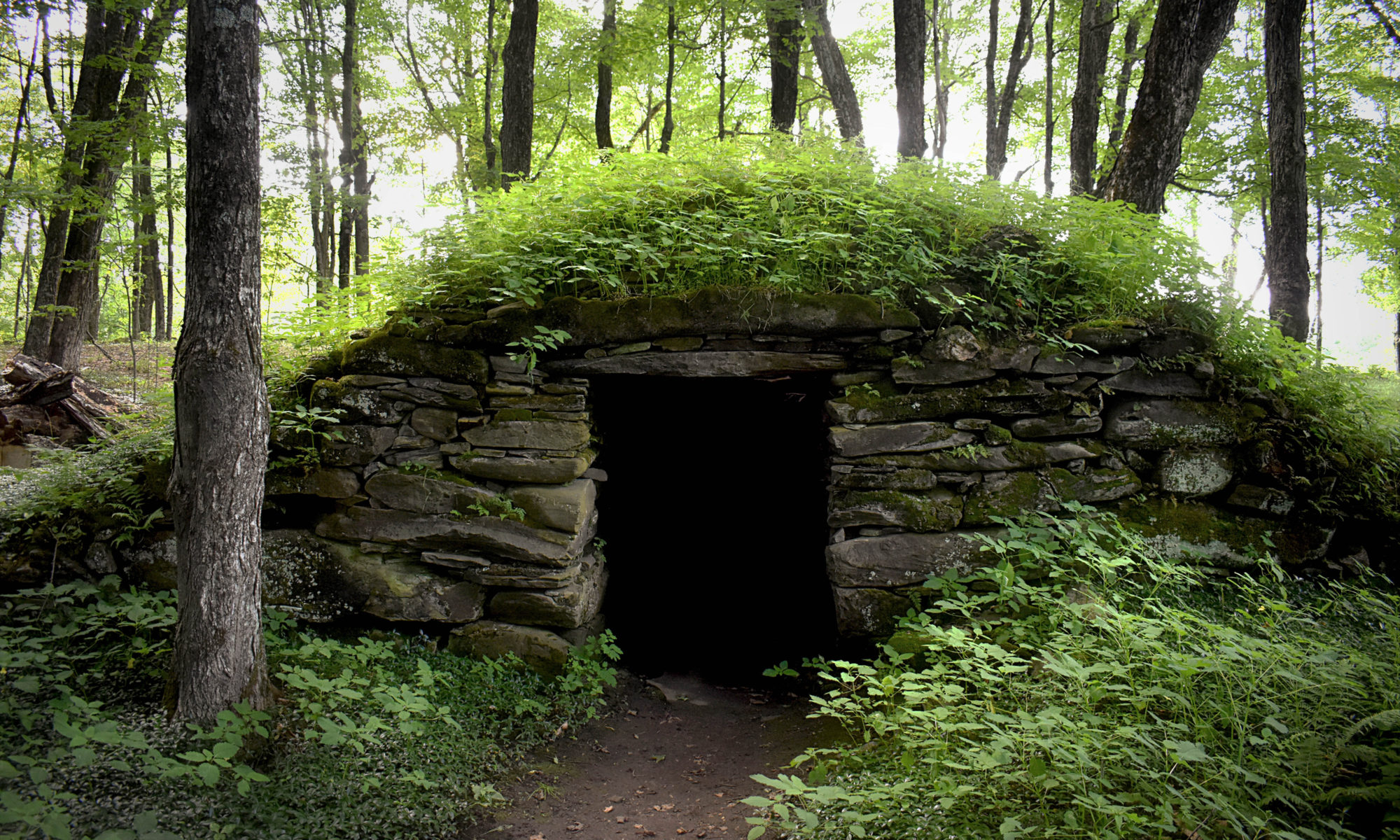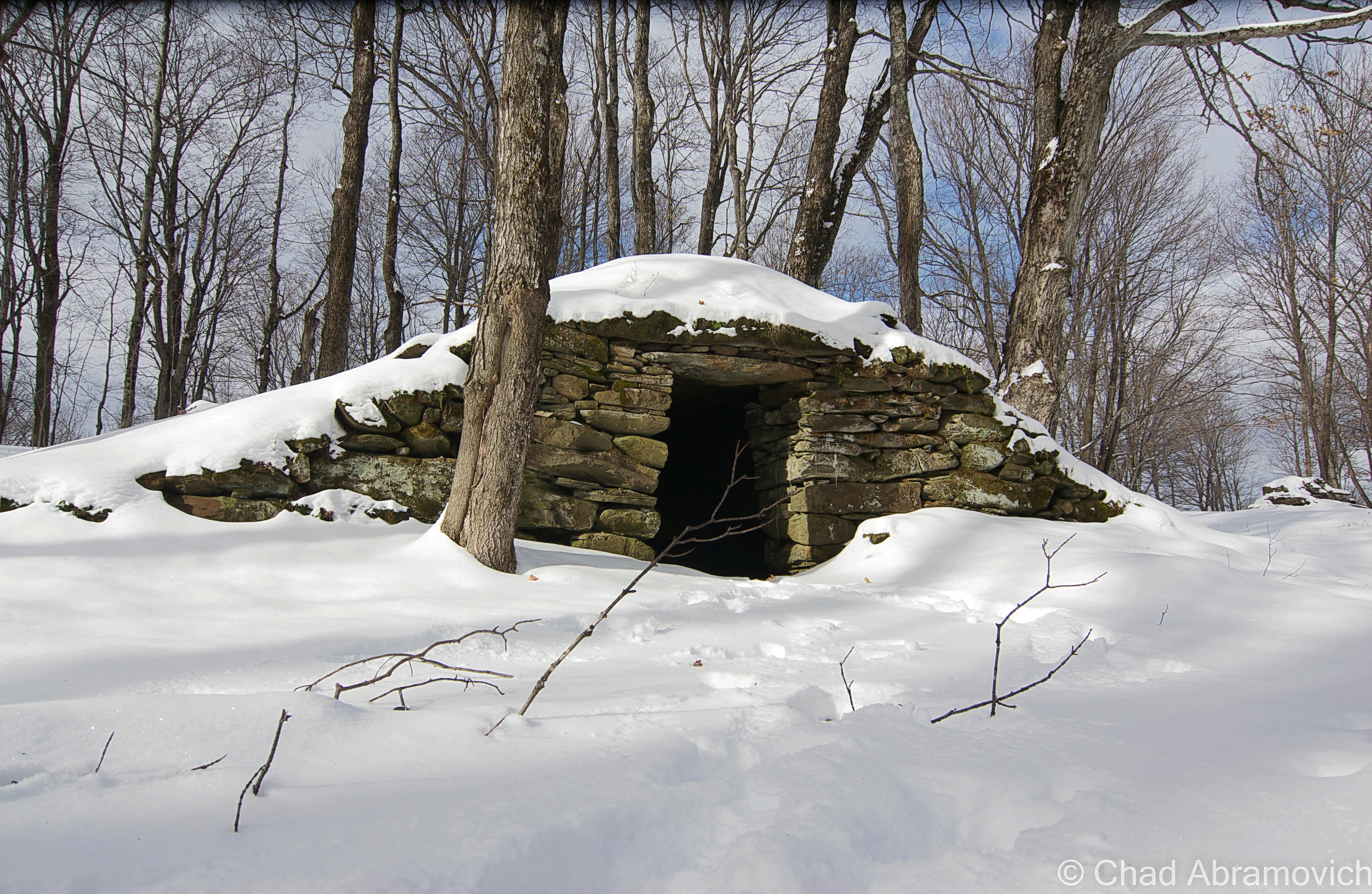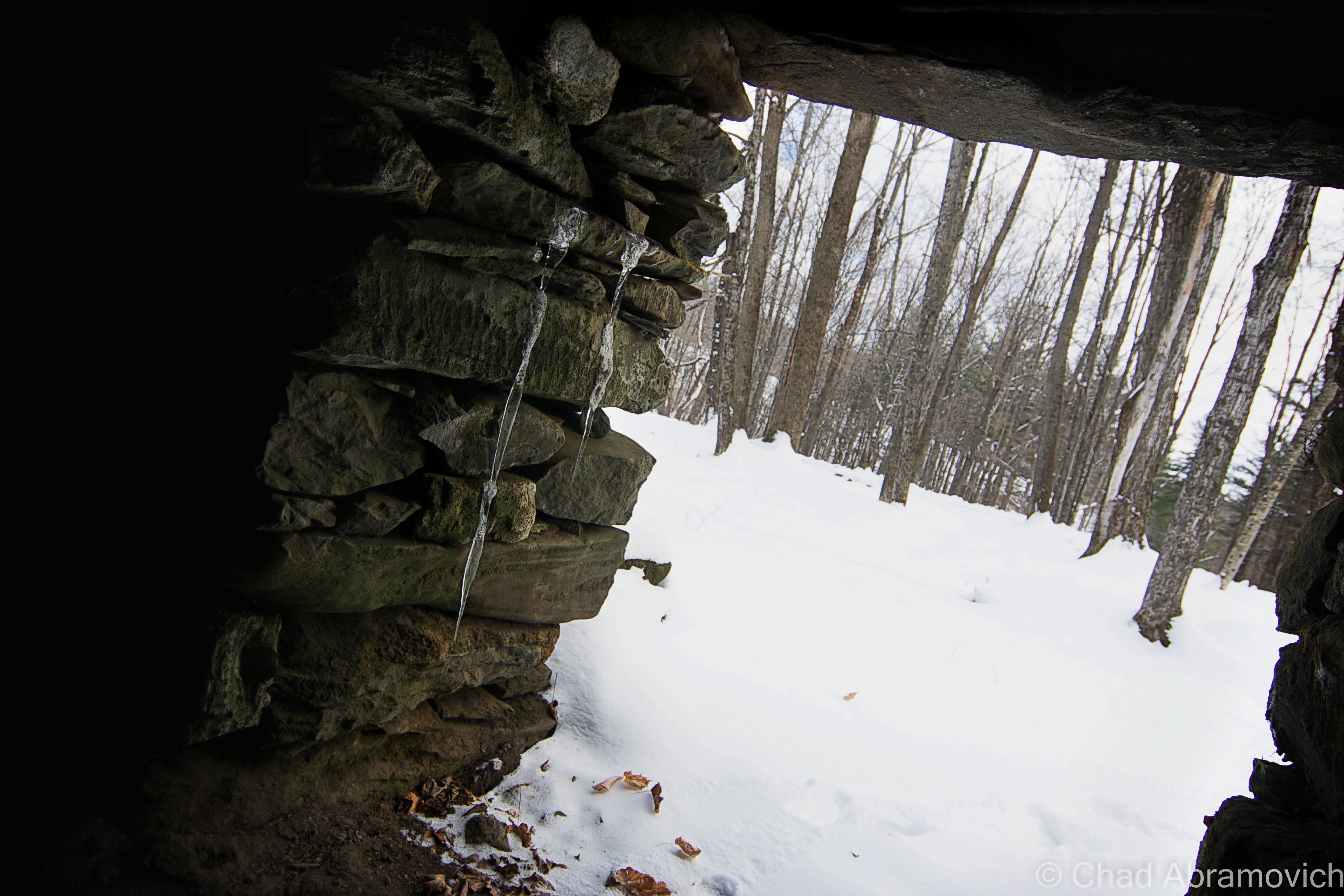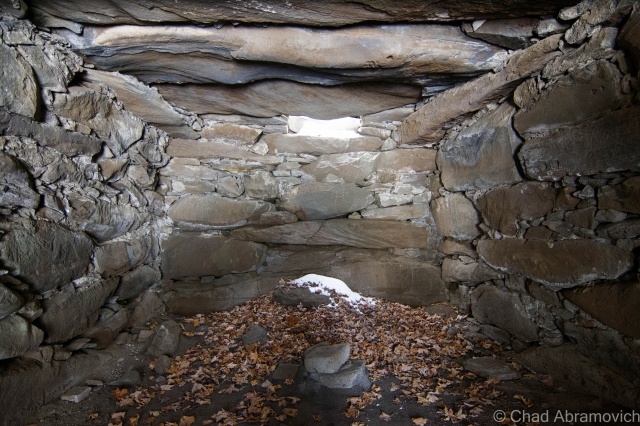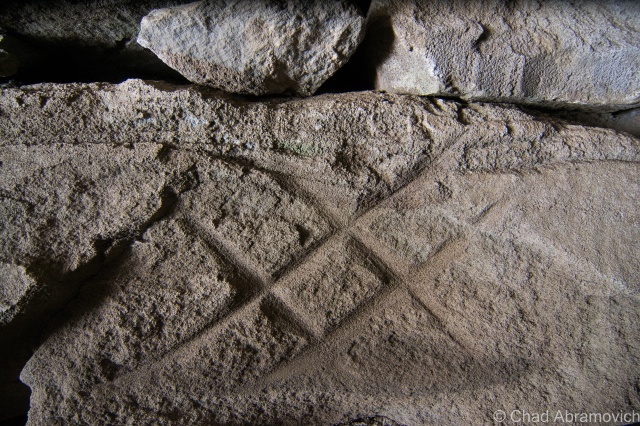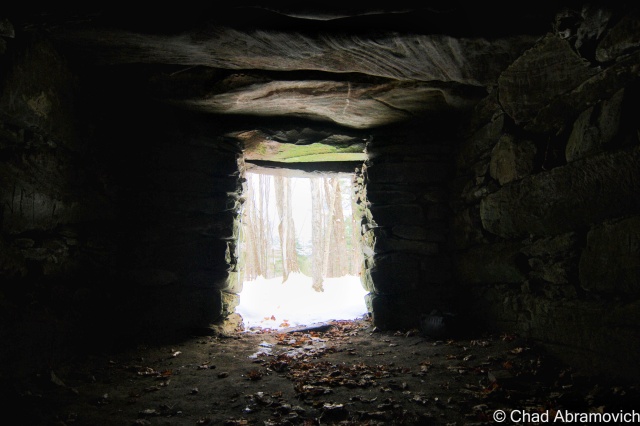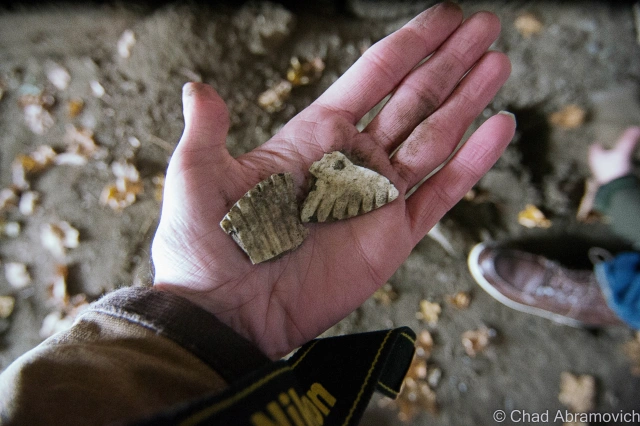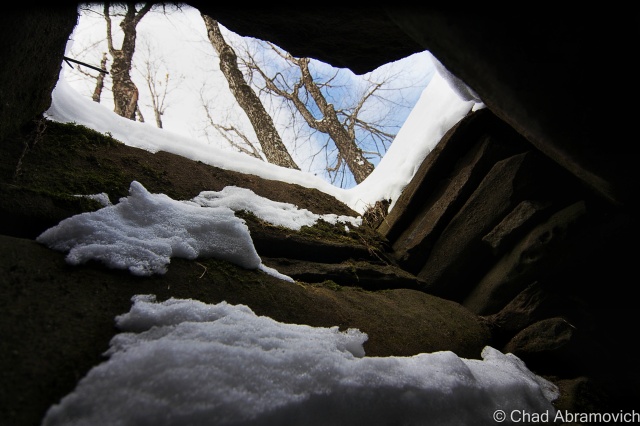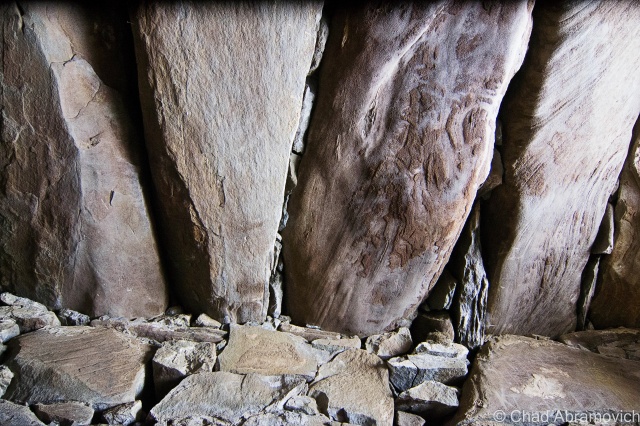New England is an old region. But we keep finding unexplainable oddities in our woods that make us wonder just how old. (As a matter of fact, New England just might be a misnomer…) The great north woods that stretch across the northeast successfully hold many unsolved mysteries and intriguing curios. Seriously. Though parts of New England have become characteristically developed over the last century, the varying topography here and it’s fluctuating inaccessibility makes it hard to have a complete idea of exactly what is out there still. For example, a plane that slammed into Jay Peak in 1943 was just found in September of 2016.
Many of our curiosities have been made possible thanks to something ubiquitous to the northeast; rocks. There is “America’s Stonehenge” in Salem, New Hampshire, a strange site featuring exoticisms of stone construction whose builders and purposes are pretty obscure. There is the mysterious Gungywamp in Connecticut that has rock placements that may date back to 2000 BC, the vulnerable Upton Chamber in Massachusetts, and tons of stone tunnels, chambers and monoliths found all over this weird part of America. Many have yet to be discovered, and some are vanishing into the past tense.
Vermont adds to that list of eccentric finds with mysterious stone chambers scattered in the deep forests and rocky highlands around the state.
These strange beehive structures have incredible craftsmanship, using several ton stones put together with dexterity and without the use of machinery or mortar. The question is, wtf are they? Who built them, and why?
Most of these structures are igloo-shaped, burrowing into a hillside with a door like opening. Inside, the walls are made from perfectly placed stones and the ceilings encompass giant stone slabs weighing several tons. Some have enigmatic inscriptions etched into the stones that have baffled people since they have been discovered. Any information seems to have long ago vanished in some sort of cultural hiccup, ensuring the answers were never handed down, leaving this as one of Vermont’s greatest lingering mysteries.
But there are theories, and depending on who you ask, are the subject of much debate. An accepted theory by the powers that be of state historical research is that these stone igloos are nothing more than colonial root cellars, as old as 200 years. A Google search on them showed me several similar structures all tagged under the same label. But from what I was seeing, these constructions involved more modern planning or construction, often with brick or mortar and more defined delineation. Many of the alleged ancient chambers, weren’t, and were more naturally but impressively put together. Some of these stones weigh several tons, and would have most likely had to be dug up and transported to the building sites. Why all that labor for a root cellar?
More mystique has affixed itself to the masonry of these chambers, sort of debunking the root cellar notion the historical society stubbornly upholds. The Native Americans knew of these chambers as well, denied building them, and seemed to be just as puzzled. So it could be possible that these stone chambers were here long before the first land grabbing Europeans set foot in the hills of Vermont. And apparently, one of them has been carbon dated before, and the results concluded that these may have existed more than 2,000 years ago. So what are they, and who built them?
Another explanation that is gaining popularity is that these mounds are a product right out of Atlantic coast area Europe, and were built by ancient Celts or Vikings, who during seafaring explorations, landed over here in northeastern North America.
While here, they discovered copper deposits, which Vermont is loaded with. Could these mounds be the product of ancient copper miners? And if so, that would further support that Celts or Vikings were here far before Columbus set foot in the western hemisphere. But that still leaves out a revealing detail; what were these stone chambers used for? Some speculate they were tombs, a place to leave the dead to be returned to Mother Earth.
Many of these constructions have some sort of astronomical significance and have been savvily placed to align almost precisely with the vernal equinox or winter solstice.
They’re also pretty similar to traditional Celtic dwellings in Ireland or the British Isles, minus the thatched roof and instead, New England-ized. Some were found to even have chimneys, or, openings in the stone roofs. Could they have been Celtic explorers attempts at homesteading here?
Other chambers offer ways that the past can speak to us in the modern world, but their messages are often hard to decipher, raising more unanswerable questions and scrutiny than not. Ogham/Ogam, a dead ancient Irish language, has been found etched in the very stones that these chambers were constructed from. One inscription was translated as; “Precincts of the gods of the land beyond the sunset”. Could this be Vermont’s original name?
We’ve already debunked the conventional unwisdom of Columbus and later the Pilgrims being the first to set foot around these parts, and are continuously finding evidence of Viking settlements, so why not add the Celts to our visitor roster?
In Vermont alone, there are a reported 200 of these stone structures scattered around the state, with possibly more that have yet to be discovered, and others which have already shook hands with their mortality.
I was on some message boards doing some research on ancient Vermont stuff, and one commenter from Windsor County had written that there was a stone chamber on his property, but some rowdy kids trespassed and pulled a stone out of the wall that they thought had Ogham on it, and later, the whole structure collapsed. I can see why some people aren’t into the idea of these oddities being ancient, because of the disrespectful visitors they can draw. As an oddity-hunter and explorer myself, this is why I almost never give out the locations I visit, because sadly, you can’t trust people not to ruin things. But the biggest cause of death for these sites is actually by construction projects. Often, they have been purposely razed to make way for cheap cookie-cutter housing developments or a farmer wanting to expand their hayfield.
But despite all this, their existence remains largely unknown to most Vermonters, and more shockingly, it seems not many are interested in studying them, creating roadblocks to discovering exactly what they are. And any assumptions a curious adventurer may come up within the throes of wanderlust are meant with the silence of the forests, and the chilly winters coming down your neck. But despite the chills, the fires of my imagination were inspiring me that day when I headed down towards Southern Vermont to see if I could find some answers for myself.
It was those winter chills and the harsh glow of the dying November sun that slipped under my skin as I stepped out of the car. My feet crunched across field grasses and around muddy stream beds as I made my way up the hill. I knew the location of one of these mysterious stone chambers, and I was on a mission to find it. But it seems while I was seeking one mystery, I stumbled into another one. Just where the heck was it? I had vague directions, but underneath the brown leaves that coated the forest floor, everything was indistinguishable. There was no large mound and no doorway. The sun was beginning to sink behind the looming shadow of Killington Peak, and it was getting colder. After awkwardly combing the woods for 20 minutes, I decided to head back to the car, feeling my stomach sink a little.
Not wanting to admit defeat, I decided to utilize a great Vermont resource; the town clerk’s office. And I seemed to be in luck, as my question raised enthusiastic responses from the people inside, as they crowded around the front desk. As one person created a hand-drawn map for me, another was passionately giving me directions in a fashion that can only be described as Vermonty. “Head up the road a ways until you get to the old McIntosh Farm, not sure who owns it now…anyways, you’ll notice a field is on your right-hand side after you pass where the schoolhouse used to be, but if you hit the old snowmobile trail, you’ve gone too far and have to turn around…”
Heading back up into the hills with my new directions, I was going to give it another shot. And as it turns out, I was almost right on top of it to begin with. This time, I noticed it, barely. A small hole in a rolling mound of earth just at the edge of a field. As I walked over, it became clear what had happened. The “hole” was actually the entryway I was looking for, filled in with years of erosion and leaves that had fallen in front of it. A few kicks with my foot widened the claustrophobic entrance, but not by much. It was just enough for me to crawl into. But I was hesitant. Were there animals inside? And just how stable was this place? But perhaps what was unnerving me the most, was the weird feeling it was giving me.
As I watched the clouds overwhelm the evening sun, It was strangely bittersweet. I was happy I had managed to find it. It seems like in a few years, this dome is in danger of becoming buried by mother nature, another thing long lost. It seemed so simplistic, a simple stone igloo structure, and yet, the work that went into making it was incredibly labor-intensive. I felt like I had a brief connection with something that was much bigger than me, and yet, it seemed vacant, like a tomb – nothing breathed there in the cold.
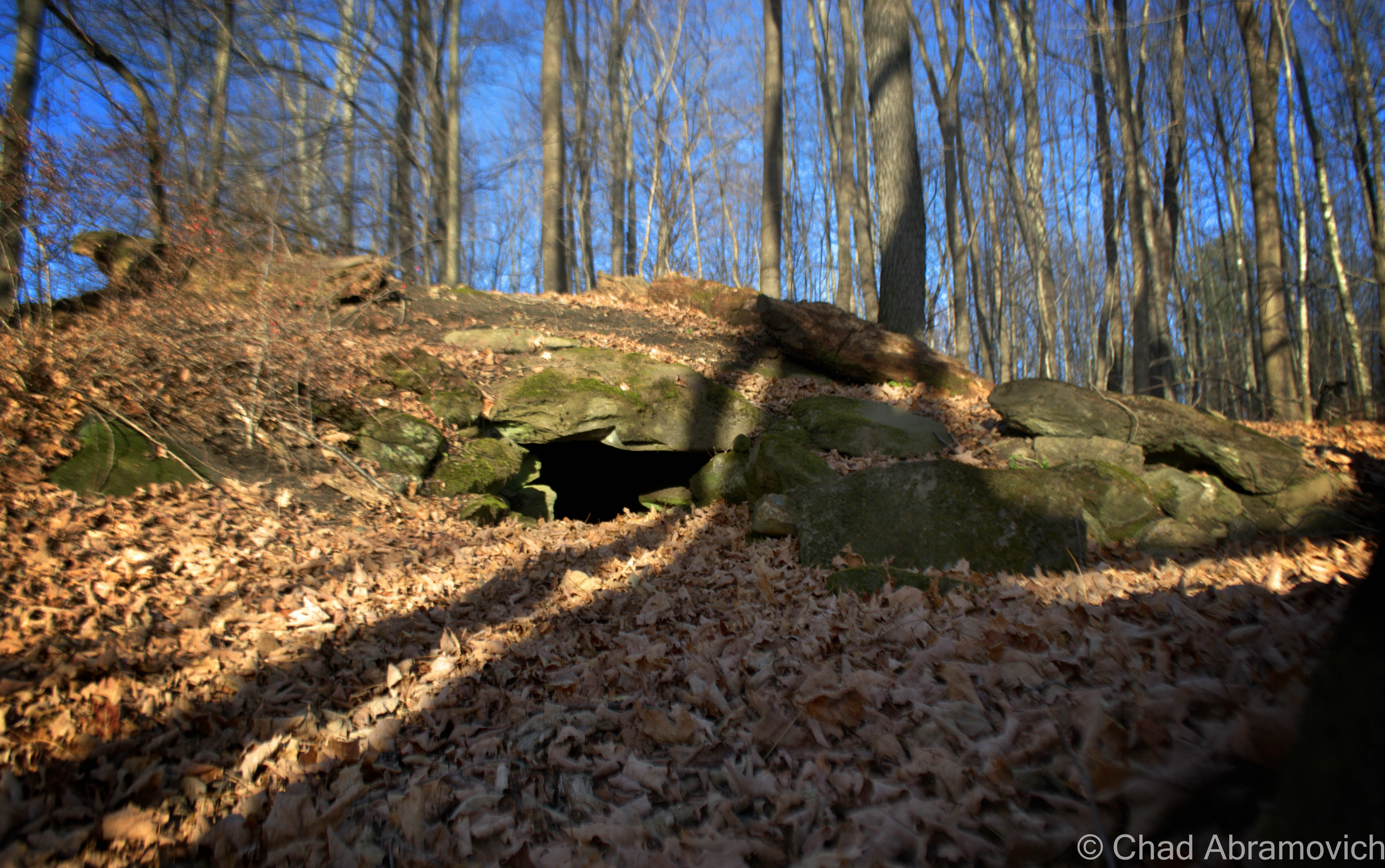
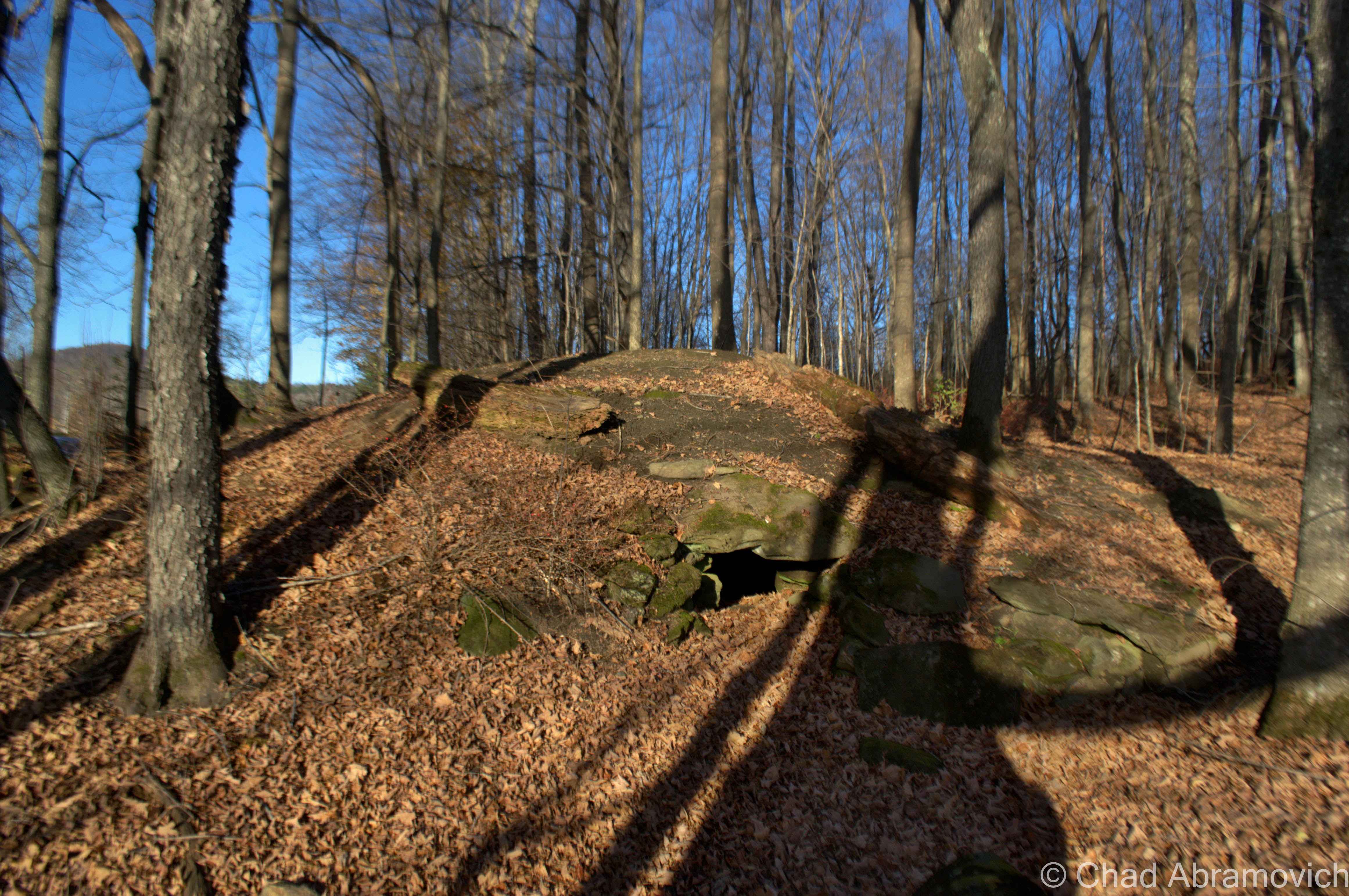
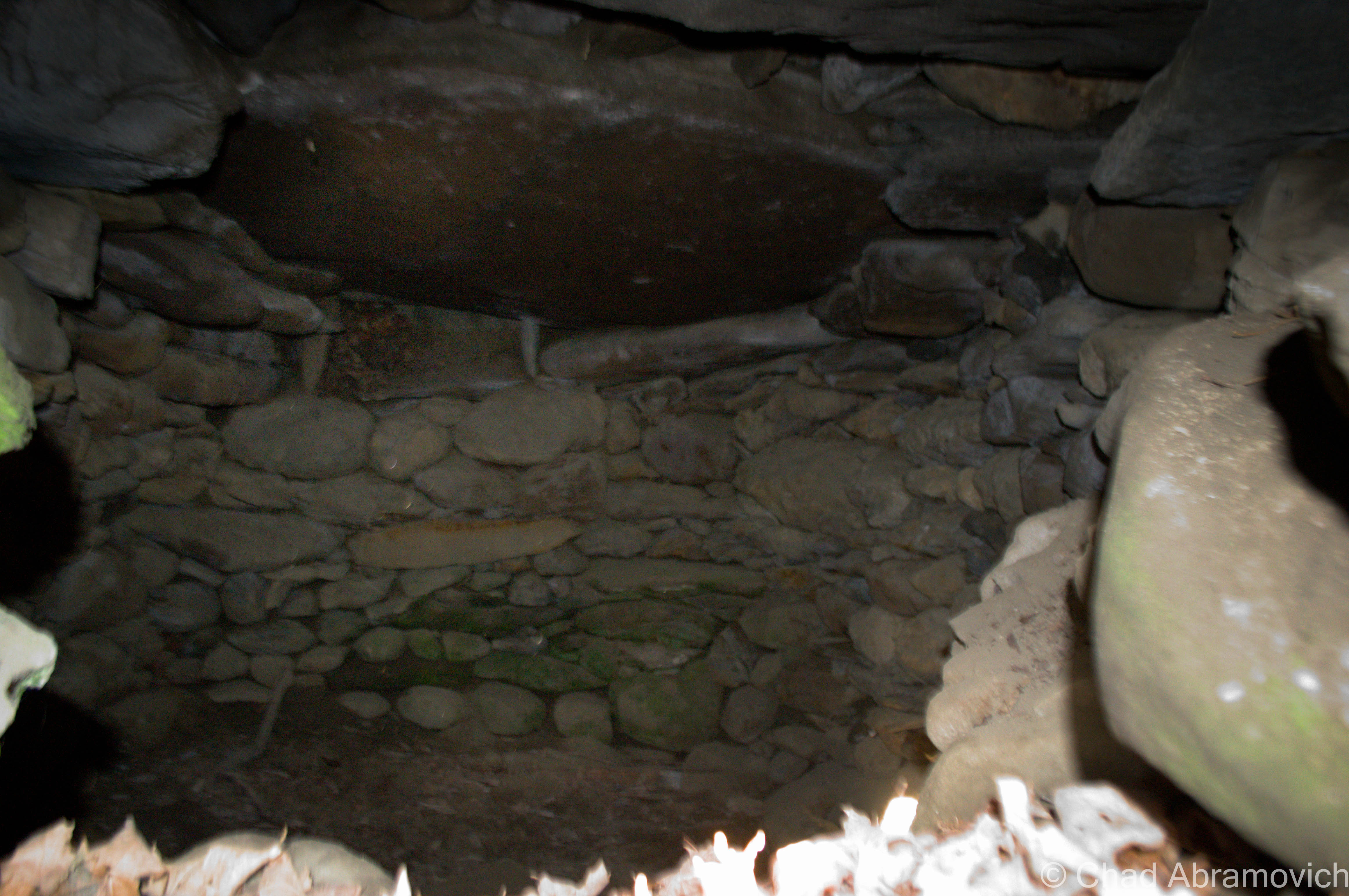
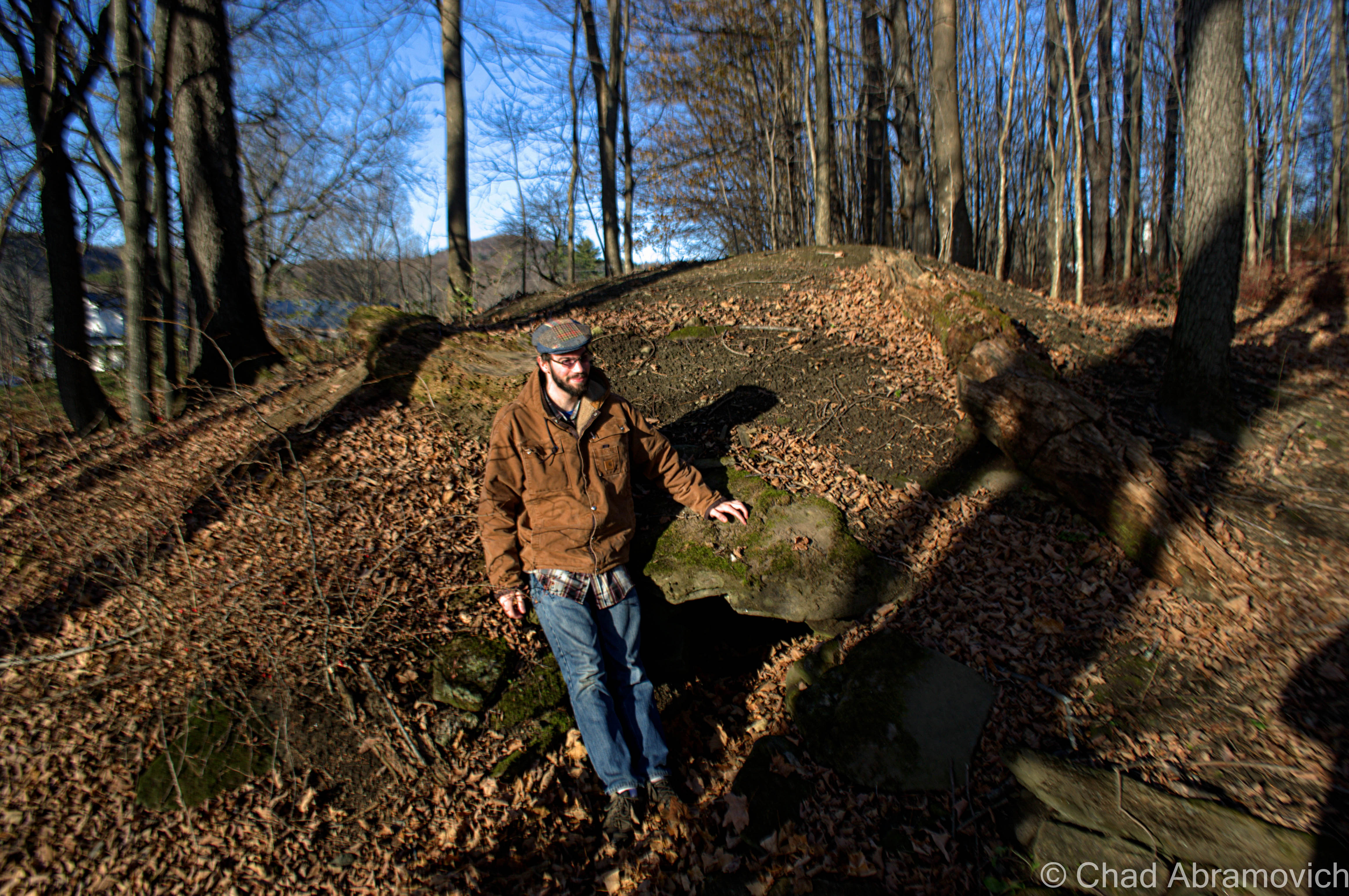
In 2016, I tracked down another chamber with a good compadre, and made a 2-hour drive to do a little investigating. Ancient Vermont enthusiasts know this particular chamber pretty well, and as we found out, so do other people. The earth floor was uncommonly flat with a chimney-like opening towards the back surrounded by notable stone slabs that made up the ceiling with hefty masses, that were aligned together and supported almost precisely. I read that some explorers and archeologists had found subterranean chambers, or spaces underneath some of these chambers, their entrances hidden by stone slabs on the floor. There was a debris pile in the back below the chimney that I started to pluck a few stones from, just to see if this was one of those chambers. It wasn’t.
Many of the stones were carved up with prior visitors in modern-day English, but we did find a few obscure linear patterns and scribings that, may have been done by a previous tourist, but seems a little weird in terms of what is normally graffitied in these sort of locations. We were able to pull up Wikipedia on my friend’s phone and tried to dabble in cryptography for a bit, seeing if any of these hieroglyphs were anything close to Ogam, but there were no confident matches I could make.
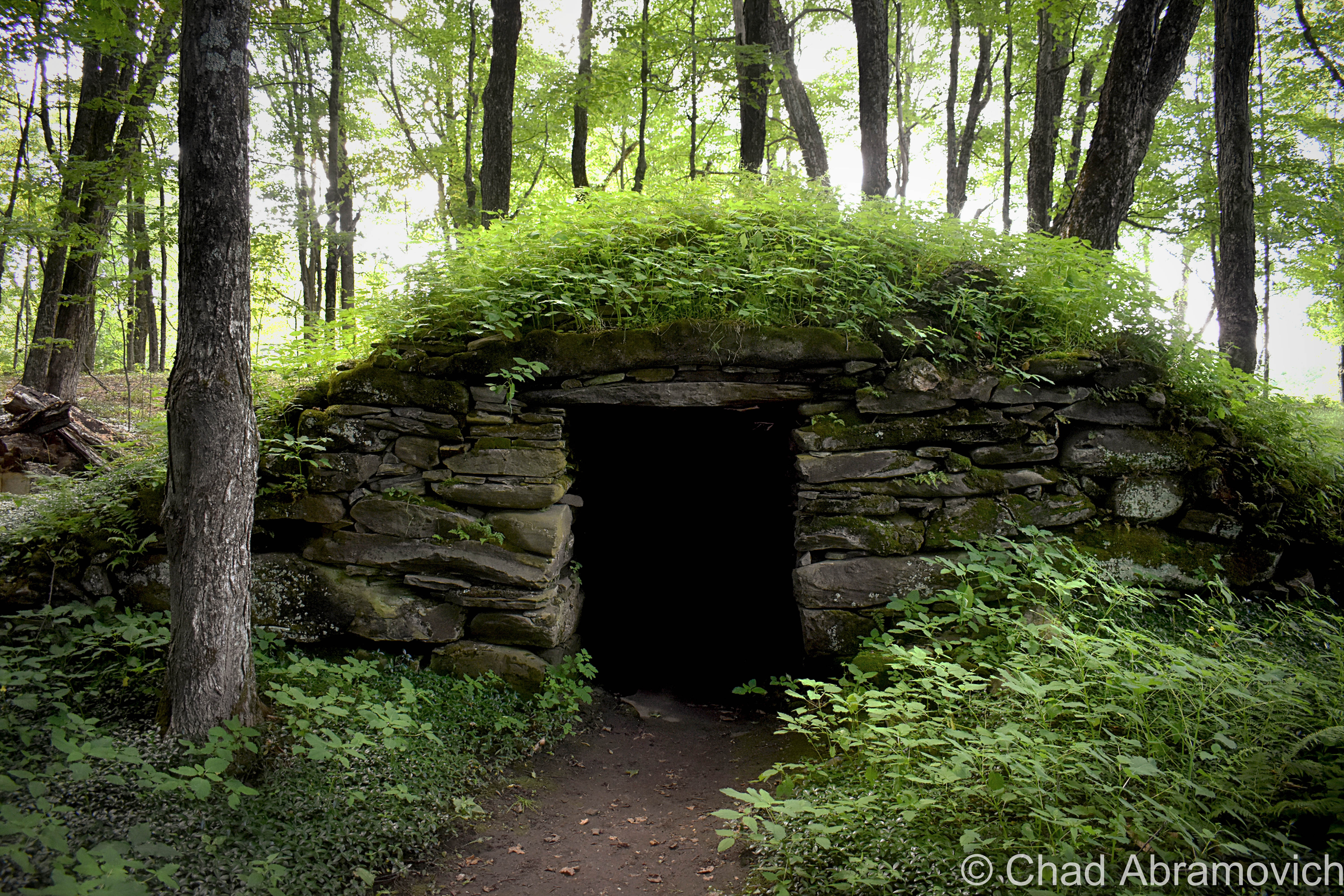
Here’s another chamber down on Putney Mountain, which is crossed by some rough dirt roads that ramble along more stone walls per capita than anywhere else I’ve ever seen. It was pretty remarkable.
The chamber was hard to spot. It looked more like a primitive drainage culvert, but my intel said it was on a certain road, and after that road turned into a 4-wheeler trail and I saw nothing else that resembled what I was looking for, I figured I’d make my way up into the woods and peer inside the small opening.
I’m glad I did, though deceiving, it really opened up inside. It was what I was looking for!
My guest on it being a culvert was a bit well founded, though. It seemed the entrance had a scanty drainage channel that flowed down towards the road, which made sense because the inside of the chamber sure was swampy. This stone room was also facing east, like so many other ones in New England.
There’s another one somewhere nearby called “The Pig Pen”, because farmers were just as vexed by its presence back in the day, and used it as a place to corral their pigs and cattle. That one would require GPS coordinates and a good bushwhack, though, so I’ll have to attempt that adventure on a warmer, more prepared day.
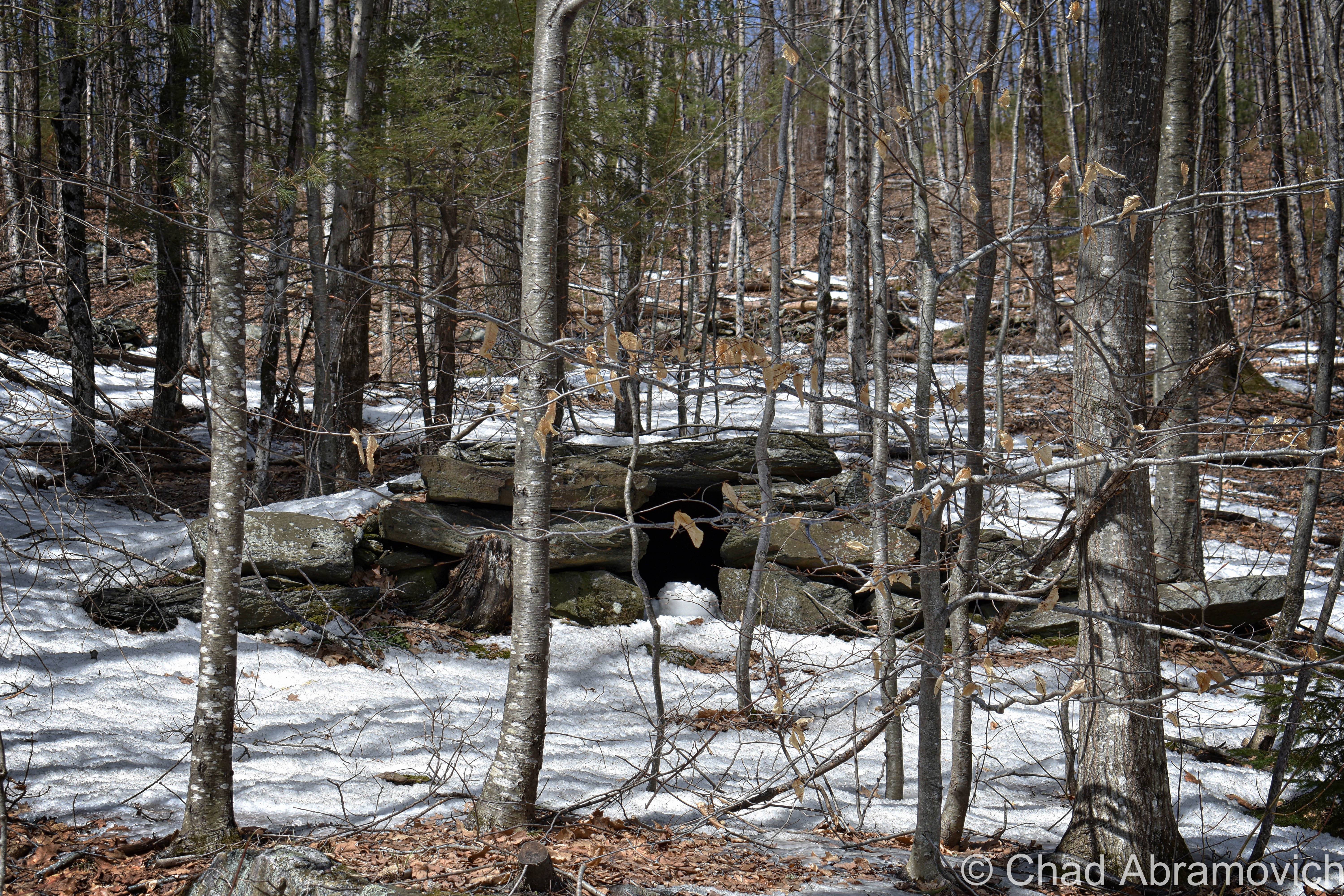
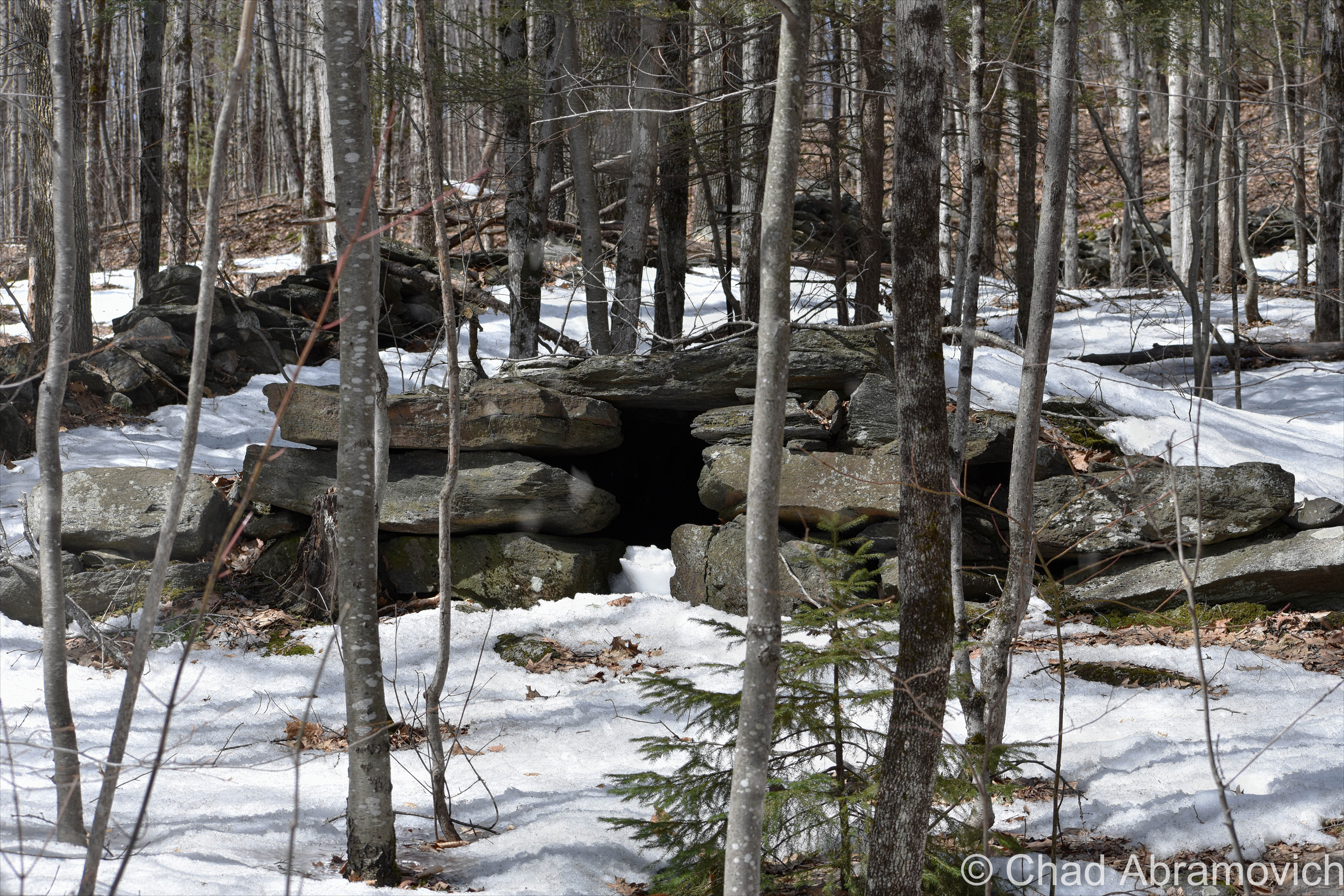
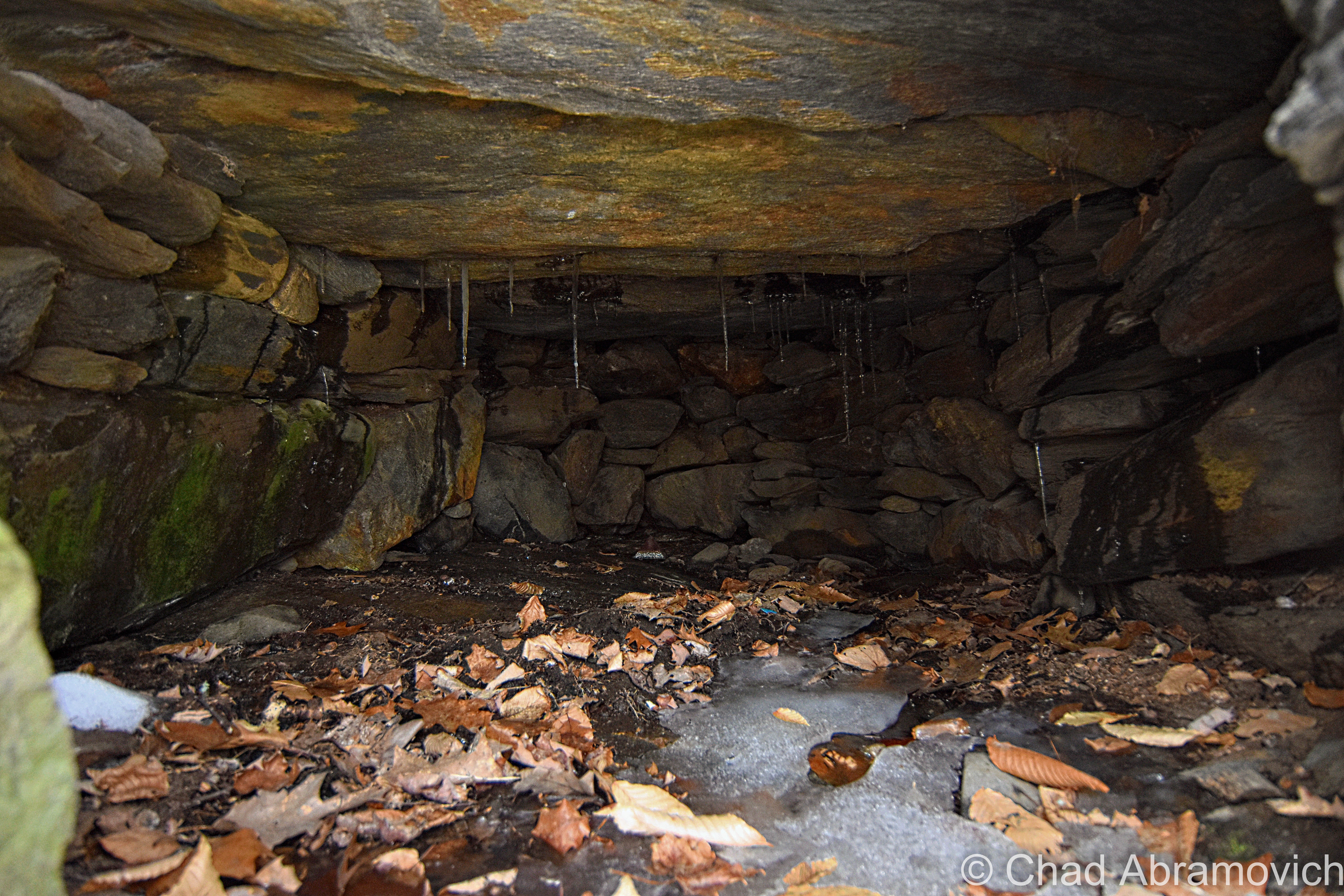
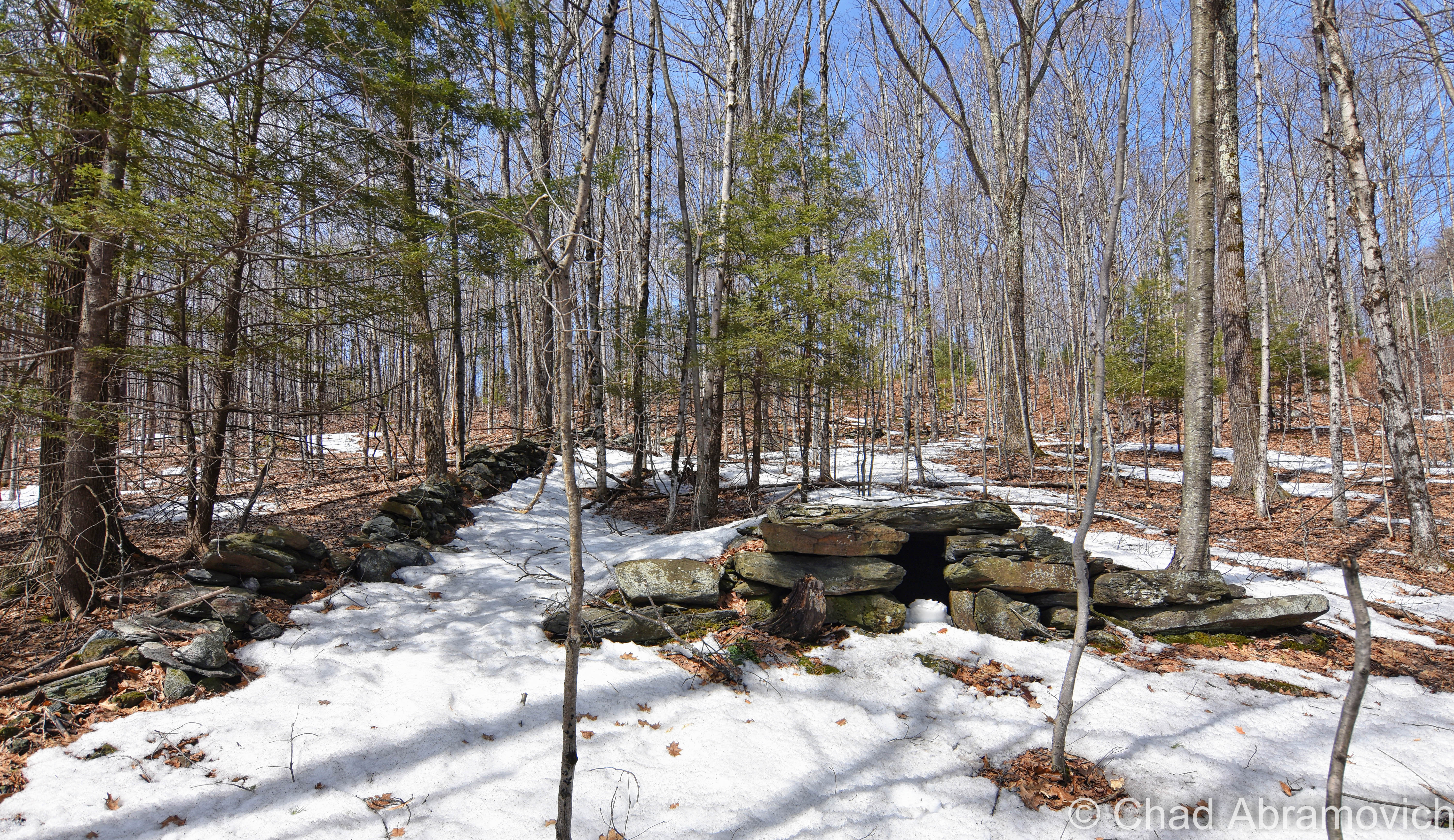
There are plenty of different theories and research compilations done about these stone chambers. Here are a few good ones if you’re interested in further research:
Vermont’s Stone Chambers: An inquiry into their past
Vermont History: Stone Chambers
Lost History: The story of New England’s Stone Chambers
—————————————————————————————————————————————–
To all of my amazing fans and supporters, I am truly grateful and humbled by all of the support and donations through out the years that have kept Obscure Vermont up and running.
As you all know I spend countless hours researching, writing, and traveling to produce and sustain this blog. Obscure Vermont is funded entirely on generous donations that you the wonderful viewers and supporters have made. Expenses range from internet fees to host the blog, to investing in research materials, to traveling expenses. Also, donations help keep me current with my photography gear, computer, and computer software so that I can deliver the best quality possible.
If you value, appreciate, and enjoy reading about my adventures please consider making a donation to my new Gofundme account or Paypal. Any donation would not only be greatly appreciated and help keep this blog going, it would also keep me doing what I love. Thank you!
Gofundme: https://www.gofundme.com/b5jp97d4


